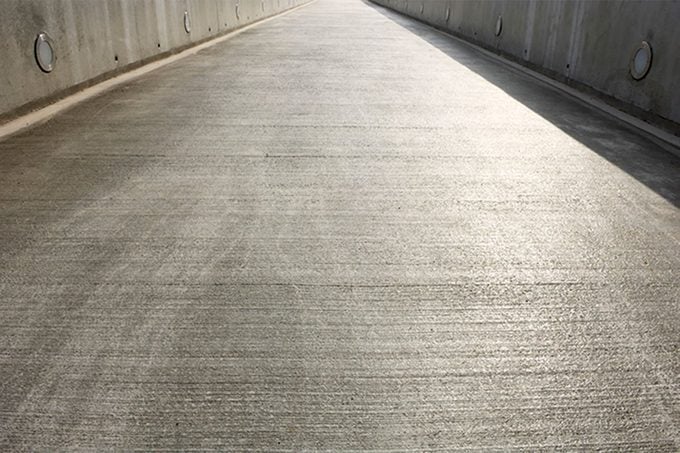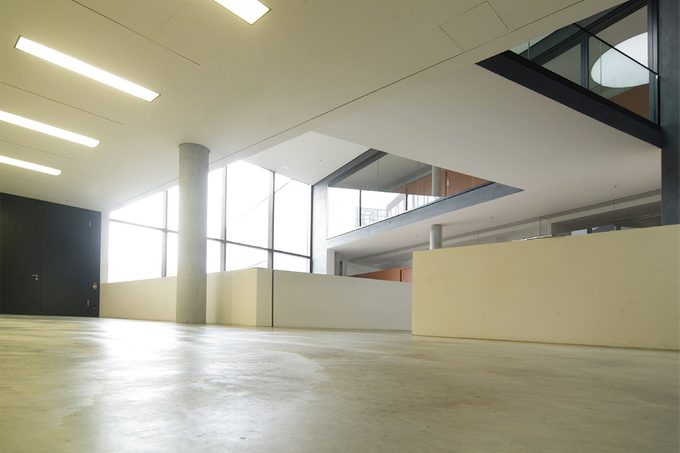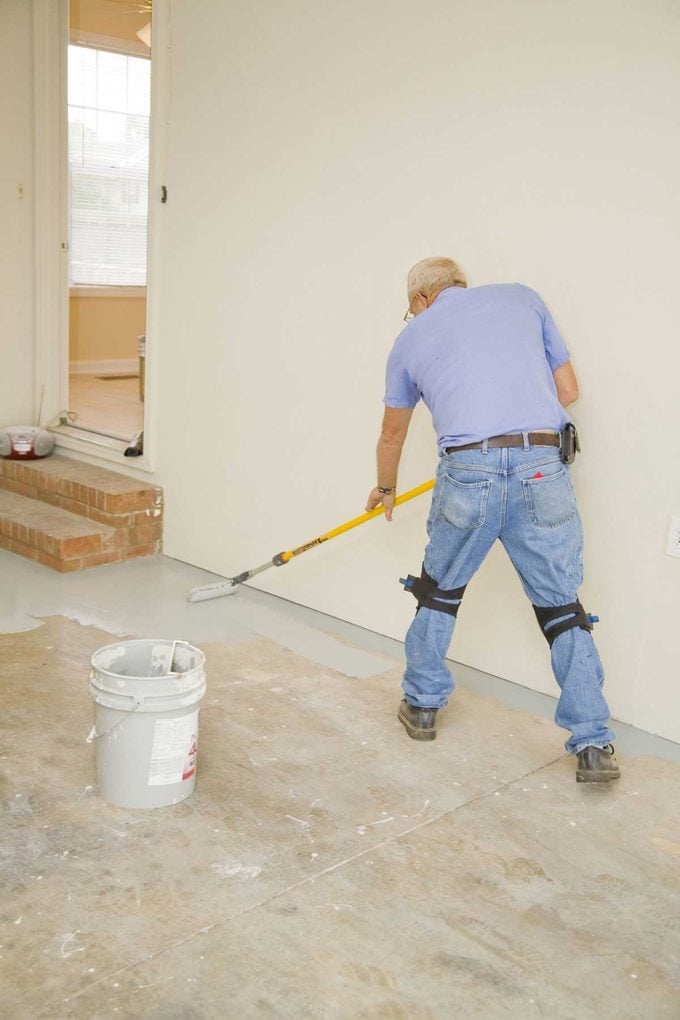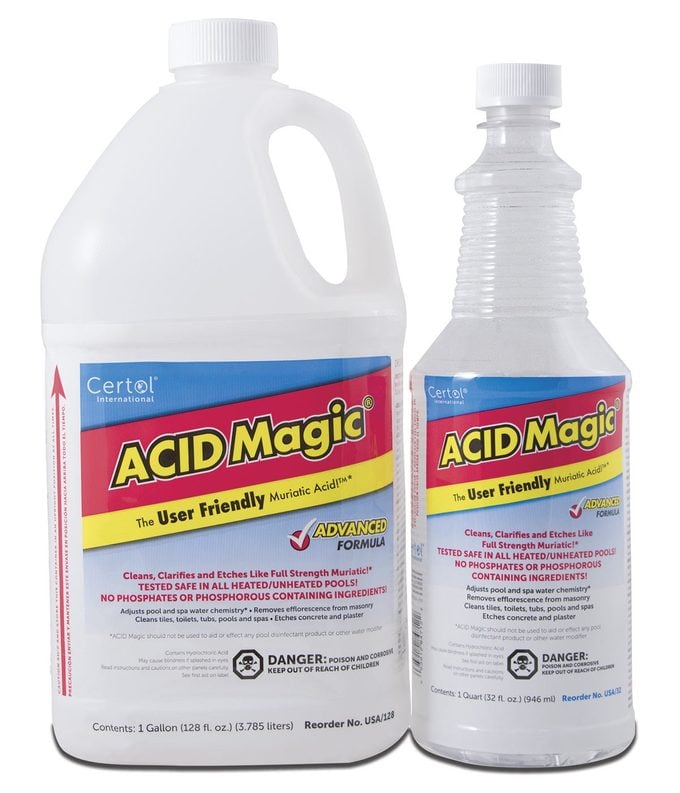5 Crucial Tips for Concrete Care
Updated: Sep. 07, 2022
Here are five easy—and relatively inexpensive—ways to keep your concrete as strong as King Kong, according to Acid Magic.
Let’s face it: It’s pretty easy to take concrete patios, sidewalks, driveways and basement and garage floors for granted. After all, they seem pretty darn invincible as you walk and drive all over them, day after day, month after month, year after year. And concrete is strong and durable—until it’s suddenly not.
Like a weight-lifter who stops working out, an unmaintained concrete slab can slowly deteriorate. Couple that with the fact that concrete isn’t cheap (one recent survey pegged the average nationwide cost of installing a concrete patio at about $2,630), it’s clearly in your best interests to protect this seemingly invulnerable investment with a little TLC.

With that in mind, here are five easy—and relatively inexpensive—ways to keep your concrete as strong as King Kong:
On This Page
1. Seal the Deal
Concrete always should be coated with a protective sealant to repel moisture and resist stains. Why? While it appears to be as solid as a rock, concrete actually is very porous. As such, it absorbs water. And in most climates, that’s not good for longevity.
For newly poured concrete, experts recommend not applying a sealer until the concrete cures completely, which takes 28 days. What kind of sealer should you use? There basically are too kinds: acrylic-resin and penetrating sealers. And applying them is not a one-time proposition.
How often you’ll need to reseal your concrete depends on factors like the weather and how much vehicle/foot traffic it receives. But generally speaking, you’ll need to reapply acrylic-resin sealers roughly every two years, while penetrating sealers can last for five to 10 years, experts note.
Either way, sealing concrete is a fairly easy DIY project; all you need is a reputable sealing product and a paint roller with a ¾-inch nap. The cost of sealant will vary by locale, but typically runs between 15 to 25 cents per square foot.
2. Keep It Clean
Oils and other chemical stains not only look bad, they can eventually lead to concrete deterioration. Moreover, because concrete is porous, it’s best to clean stains quickly, before the material can seep into the concrete.
Here’s where ACID Magic® from Certol International steps in. For rust, scale, mineral build-up, mildew stains and other stains—even efflorescence—this eco-friendly yet still powerful form of muriatic acid, an intense cleaning agent, is your new BFF when it comes to cleaning concrete.
ACID Magic is a safer alternative to standard muriatic acid and a one-for-one replacement. Better yet, it generates up to 90 percent less fumes, which makes it easy to use indoors (with proper ventilation, of course). Furthermore, thanks to buffering agents, it won’t burn intact skin. (But you should still wear gloves and eye protection while using it.)
For more information about how to clean with ACID Magic, please click here.

3. Avoid Deicing Chemicals
Experts advise against using deicers on concrete, especially not before it’s a year old. Interestingly enough, it’s not the deicers that actually cause problems—it’s the increased number of freeze-thaw cycles that they induce.
Here’s what happens: Deicing agents work by chemically lowering the temperature at which water freezes. As they work, deicers convert snow and ice into a salty brine solution. This solution keeps thawing and refreezing as the weather and temperatures change, which means the concrete endures significantly many more freeze/thaw cycles than it otherwise would.
Furthermore, this briny solution keeps migrating into the porous concrete, where it also freezes (expands) and contracts (thaws), causing more damage. Keep in mind that water volume increases about 9 percent when it freezes and expands!
Deicers that contain ammonium nitrates and ammonium sulphates are especially bad because they actually attack concrete chemically. Rock salt (sodium chloride) or calcium chloride inflict less damage, but harms vegetation. Using sand and thoroughly shoveling/scraping off snow and ice is the best alternative.
4. Etching Made Easy
Painting or coating a concrete floor with an epoxy covering can make it not only more attractive, but help it last a little longer by protecting it from nasty stains and other corrosive elements. But before you do anything, you must do the prep work and etch the concrete.
Why? Etching helps open up the concrete’s pores, which in turn allows it to better bond with the paint, forming a tight adhesive seal. Sure, you could skip this step, but only do that if you truly love to periodically repaint your floor!
Now, you could go through the expense and hassle of hiring a contractor to shot-blast the concrete. But it’s easier to just buy some ACID Magic and use this eco-friendly product to etch the concrete.
Some simple rules apply, such as start with a diluted, 1:4 ratio of ACID Magic to water (one gallon of ACID Magic to four gallons of water, for example). If that doesn’t do the trick, you can try up to a 1:2 dilution. Moreover, always add the ACID Magic to the water, not vice-versa. And use it only on concrete that’s more than 90 days old, and never apply ACID Magic to dry concrete—always wet it down first. (For more details about etching concrete with ACID Magic, click on this link.)
BONUS: Another Painting Tip
Just as water can seep into concrete, it also can migrate up from below. Poor perimeter drainage, climate conditions, leaky pipes, high water tables and so forth can cause this condition, which is problematic because damp concrete and paint mix about as well as oil and water. The bottom line: Paint doesn’t adhere very well to moist concrete.
So how do you know if you have a moisture problem? Aside from obvious visual evidence, you can perform a fast and inexpensive test. Just cut a 16”x16” piece of plastic sheeting and affix it to the floor with duct tape on all four sides.
After 24 hours, peel off the plastic sheet and see if there’s either condensation on the underside or a damp, dark area on the concrete floor. No condensation or darker area? It’s all good—get ready to etch. If not, sorry—it’s time to call in a professional.

5. A Joint Venture
Expansion joints, those felt-lined gaps between concrete slabs, allow room for the slabs to expand and contract as weather conditions change. If those joints aren’t water-tight, however, water gets under the slabs, which can cause them to pitch and heave, rise and sink. The resulting stress can crack the slabs.
To prevent this, remove worn-out felt and fill the gap with a self-leveling sealant, available at hardware stores and home centers. Here’s how to do it:
- Use a utility knife to remove the old felt. You might even need to use an angle grinder to get it all out. (Please remember to wear gloves and safety glasses.) If you don’t own an angle grinder and don’t want to invest in a tool you may not use very often, many home centers rent them.
- When the felt is removed, use a shop vac to collect the debris in the joints.
- To minimize the amount of sealant required to fill the gap, fill it with closed-cell foam backer rod, also known as filler rope.
BONUS:
Buy backer rod that’s about 1/8 of an inch larger than the expansion-joint gap.
- Push the backer rod into the gap far enough that it tucks under the bottom of the slabs.
- Follow manufacturer’s directions to apply the self-leveling crack sealant.

ACID Magic is sold at Ace Hardware and True Value hardware stores, as well as many companies that sell pool supplies. To learn more about where ACID Magic is sold, click here.
Sponsored by Acid Magic